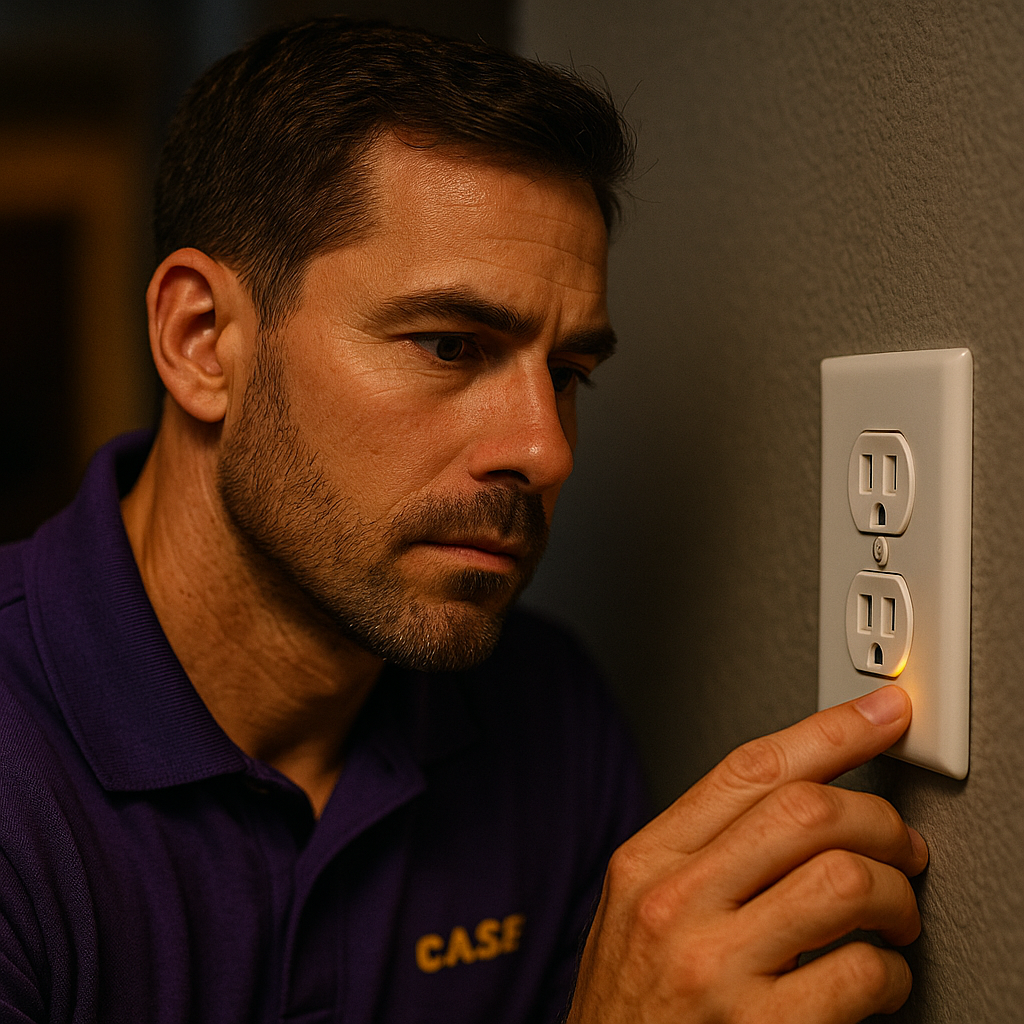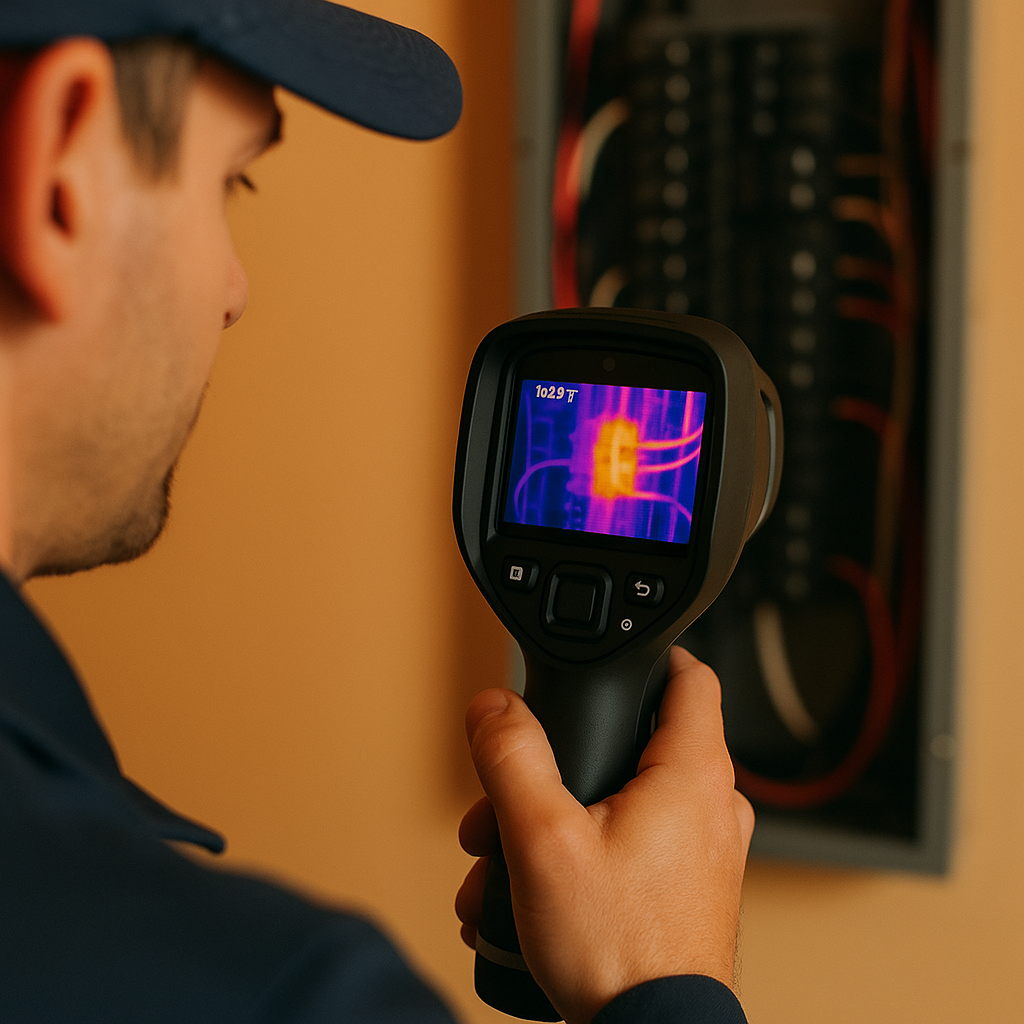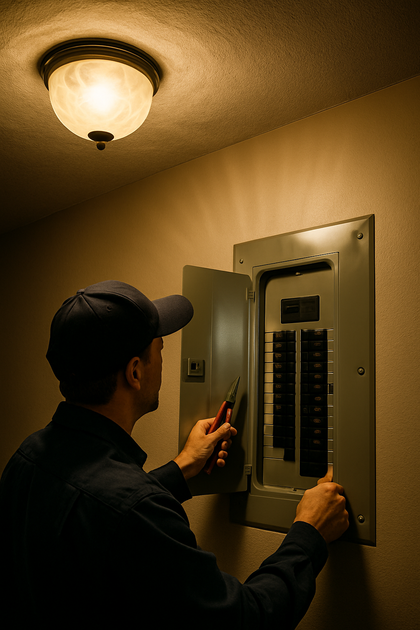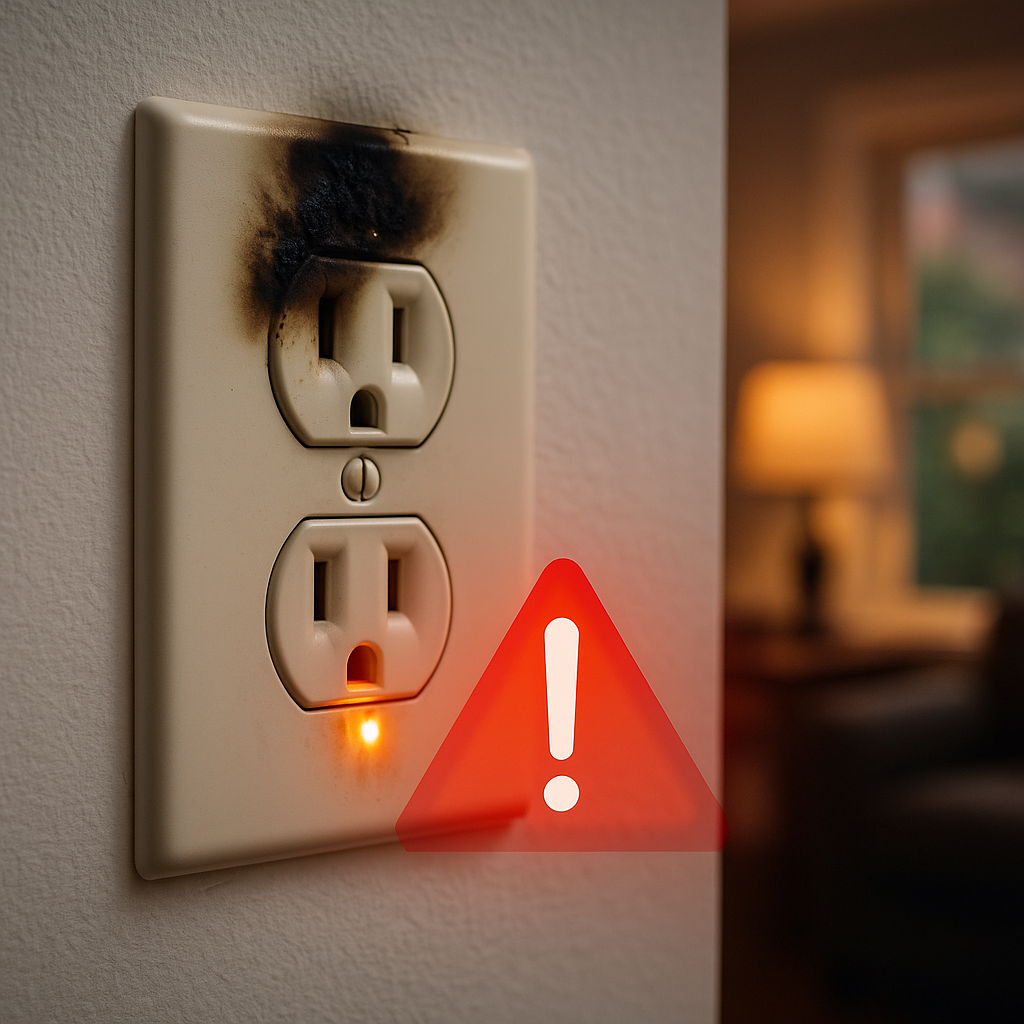Childproofing Your Home’s Electrical System
Introduction
Electrical hazards rank among the top causes of unintentional injuries in homes, with over 2,400 children under age five treated each year for electrical shocks or burns. As toddlers learn to crawl, stand, and explore, they naturally gravitate toward low-lying outlets, loose wires, and dangling cords, areas that may look innocuous but can result in serious injury or even house fires when left unprotected. Beyond immediate dangers, outdated wiring or hidden faults can degrade insulation and spark under load, leading to costly damage and prolonged disruptions. By adopting a multilayered childproofing strategy, combining code-compliant hardware upgrades, strategic cord concealment, and ongoing education, you not only shield your little ones from harm but also safeguard your property’s value and your family’s peace of mind. In the sections that follow, you’ll learn how to install tamper-resistant receptacles, manage power cords, integrate ground-fault protection, and when to call in a professional for a comprehensive safety audit.
Table of Contents
- Install Tamper-Resistant Receptacles
- Use Outlet Covers and Plugs
- Organize and Secure Electrical Cords
- Add Ground-Fault Circuit Interrupters (GFCIs)
- Protect Power Strips and Extension Cords
- Conceal and Anchor Wall Plates
- Educate Children About Electrical Dangers
- Schedule a Professional Inspection
- Conclusion
- Frequently Asked Questions
Install Tamper-Resistant Receptacles
Tamper-resistant receptacles (TRRs) feature internal shutters that block access unless equal pressure is applied simultaneously to both outlet slots, an action beyond a child’s single-finger reach. Although the NEC has required TRRs in new residential construction since 2008, many older homes lack this protection. Swapping your existing outlets for TRRs is a manageable DIY project if you’re comfortable shutting off the breaker, verifying power loss with a tester, and following wiring diagrams. For guaranteed code compliance and peace of mind, hiring a licensed electrician ensures each replacement is installed correctly and backed by professional warranty coverage.
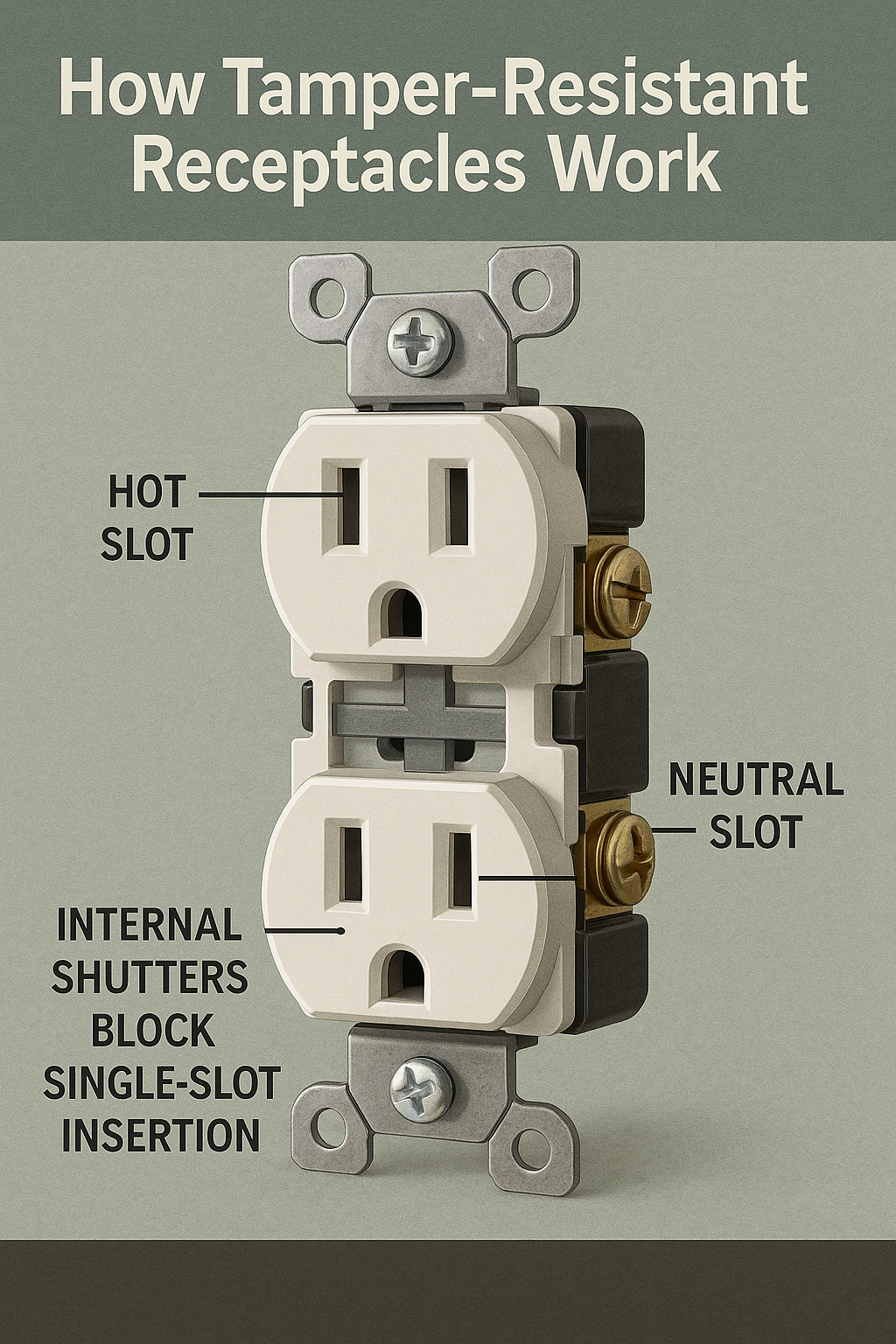
Use Outlet Covers and Plugs
Until every outlet in your home is upgraded to tamper-resistant models, high-quality outlet covers and plug-in caps offer a reliable interim barrier. Flat socket covers fit flush against the wall to deter prying hands, while spring-loaded caps remain locked under tension yet allow easy adult access when inserting a plug. Sliding outlet covers replace entire faceplates and automatically close once cords are unplugged, minimizing open slots. Always select UL-rated products and inspect or replace them annually to maintain structural integrity and reliable protection.
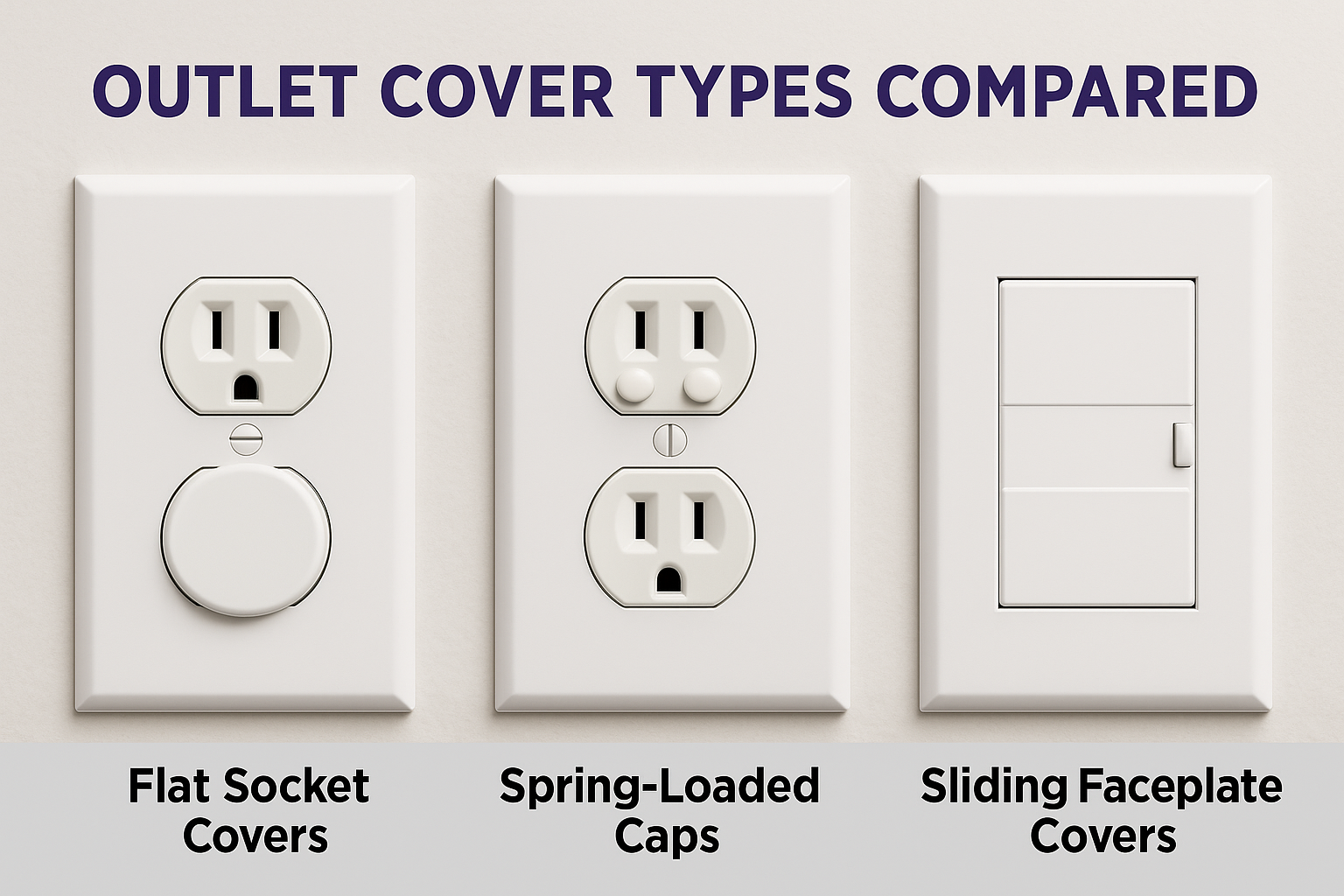
Organize and Secure Electrical Cords
Unsecured cords present multiple hazards, from tempting young teeth to creating tripping and fire risks. A comprehensive cord-management approach bundles cables behind furniture, channels them inside raceways, and uses shorteners or winders to eliminate excess slack. Adhesive clips anchored at least six feet above the floor keep power cables beyond toddler reach, while avoiding under-rug pathways prevents overheating and wear. These combined tactics not only safeguard children from electrical injury but also reduce clutter and potential fire points throughout your living spaces.
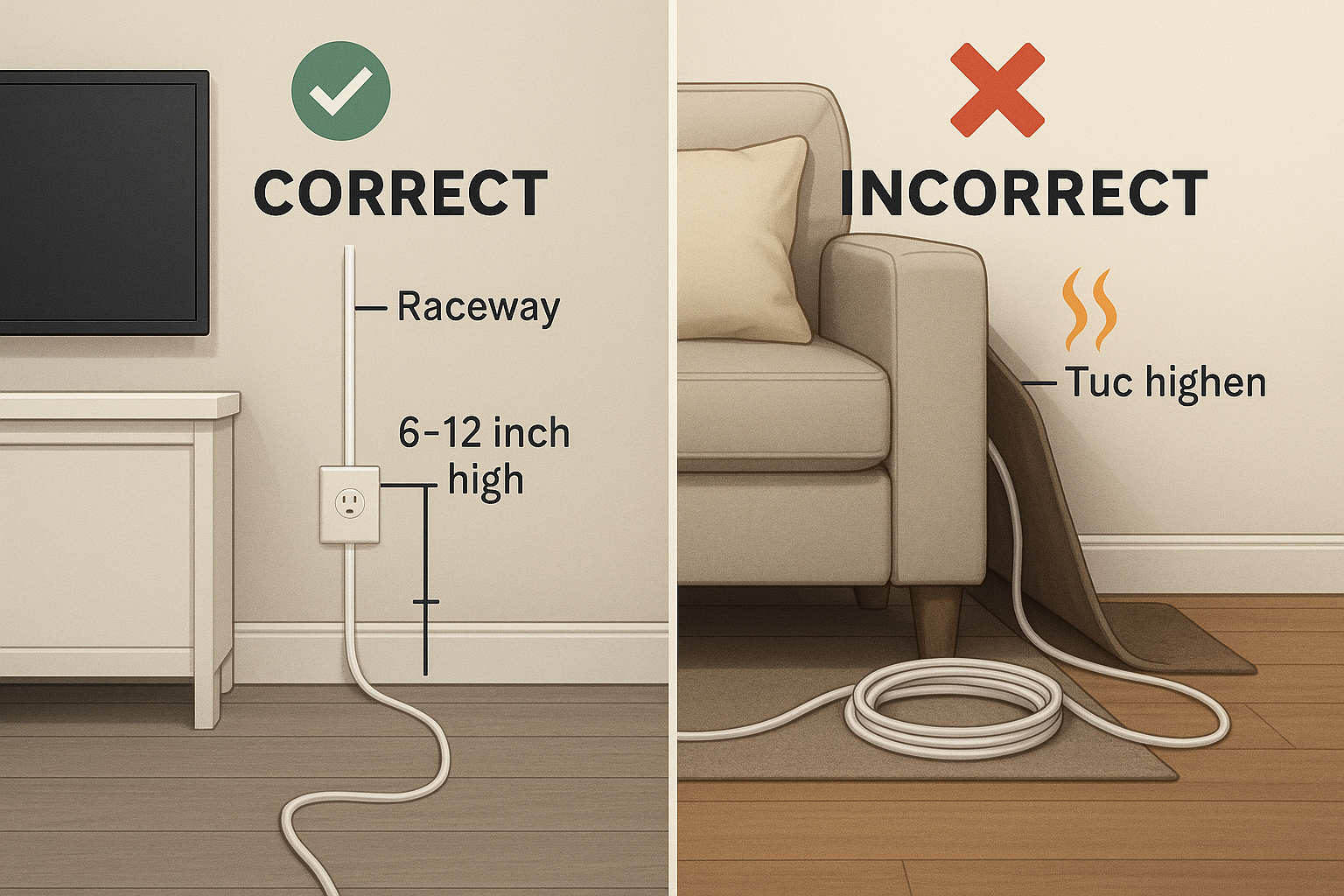
Add Ground-Fault Circuit Interrupters (GFCIs)
Ground-fault circuit interrupters (GFCIs) detect the slightest imbalance in electrical current and cut power within milliseconds, making them indispensable in moisture-prone areas. While kitchens, bathrooms, garages, and outdoor outlets are common GFCI locations, consider retrofitting additional receptacles or upgrading to GFCI breakers in your main panel to extend protection across entire circuits. Monthly testing, simply pressing the “Test” button until the power trips and then “Reset” to restore, confirms that your devices will function correctly when needed most.

Protect Power Strips and Extension Cords
Power strips and extension cords often serve as temporary solutions that become permanent fixtures, a scenario rife with hazards if left within children’s reach. Mount surge-protected strips high on walls or out of sight behind furniture, and avoid daisy-chaining multiple units together. Regularly inspect cords for fraying or discoloration, replacing any compromised pieces immediately. For long-term power needs, consult an electrician about installing dedicated wall outlets rather than relying on extension solutions that can overheat or fail.
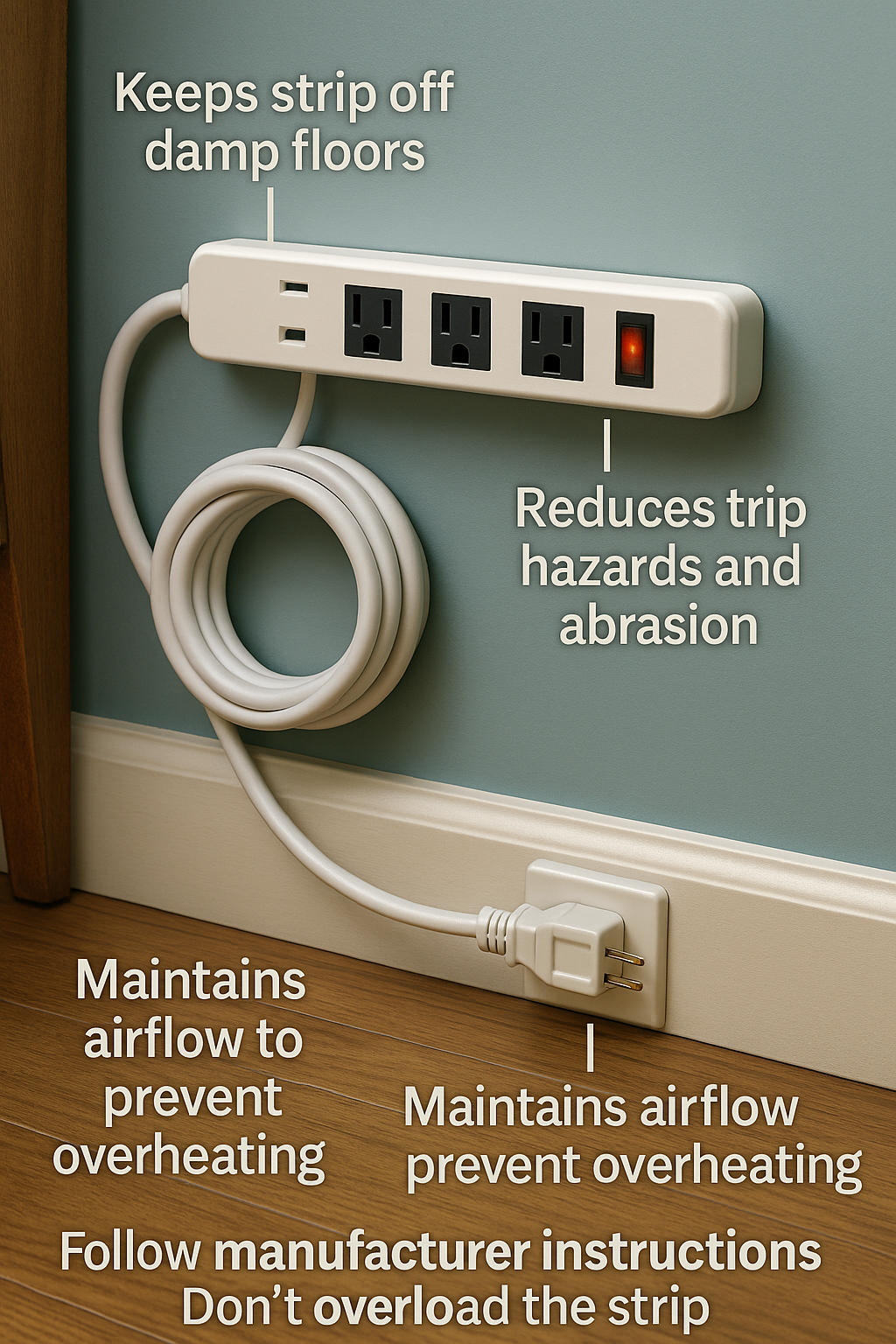
Conceal and Anchor Wall Plates
Over time, wall-plate screws can loosen, exposing internal wiring behind switches and outlets. Secure every cover plate by tightening screws until flush with the wall, careful not to overtighten, and replace any cracked or chipped plates. For an extra layer of safety, decorative snap-on screw caps block access to the screw heads, preventing inquisitive fingers from tampering with live wiring.
Educate Children About Electrical Dangers
Physical safeguards are vital, but empowering children with knowledge creates lifelong safety habits. Use age-appropriate language to explain that outlets and cords aren’t toys, demonstrate proper plug insertion, and clarify why electrical devices must remain dry. Role-playing scenarios, such as always asking an adult before touching unfamiliar electronics, reinforce boundaries. Consistent, positive reinforcement encourages adherence to these rules and fosters a sense of shared responsibility.
Schedule a Professional Inspection
Even the most thorough DIY efforts benefit from a licensed electrician’s audit. A professional inspection verifies proper grounding, assesses in-wall wiring condition, tests circuit capacity, and evaluates overall compliance with NEC standards. This expert overview uncovers hidden vulnerabilities and provides targeted recommendations for panel upgrades, additional protective devices, or rewiring where necessary. Building on a code-compliant foundation ensures that your childproofing measures deliver maximum safety and reliability.
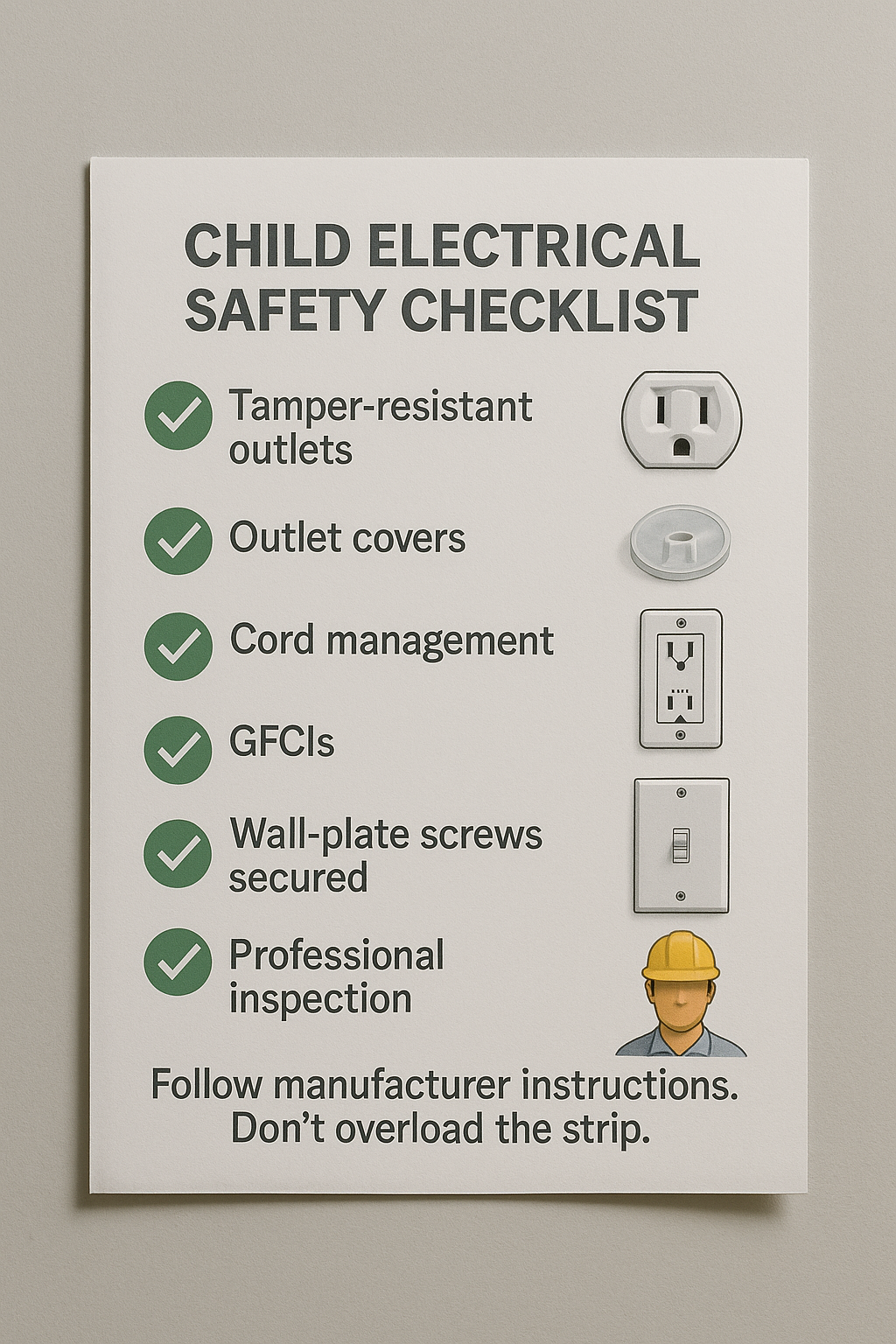
Conclusion
Childproofing your home’s electrical system is more than a one-time project, it’s an ongoing commitment to safety, prevention, and peace of mind. By installing tamper-resistant receptacles, upgrading or covering traditional outlets, organizing and securing cords, and adding ground-fault circuit interrupters, you establish a durable barrier against common shock, burn, and fire hazards. Reinforcing wall plates, protecting power strips, and educating children about electrical risks further strengthens that barrier, creating an environment where exploration is safe and parents can rest easy. Regular inspections by a licensed electrician ensure these measures remain effective over time and align with evolving National Electrical Code standards.
For professional guidance and installation, trust Ryan at C.A.S.E. Contracting Inc. Serving Grass Valley and the surrounding foothills, C.A.S.E. Contracting is fully licensed and insured, specializing in residential electrical safety upgrades. With over a decade of local experience, Ryan’s team delivers prompt, code-compliant service, from comprehensive childproofing audits and GFCI installations to outlet replacements and full wiring inspections. Reach out today at (530) 555-0123 or visit www.casecontracting.com to schedule your home’s electrical safety assessment.
Frequently Asked Questions
1. At what age should I begin childproofing outlets and cords?
Childproofing should start as soon as your baby becomes mobile, typically between six and nine months, to prevent accidents during early exploration.
2. Is it safe to replace outlets myself?
If you feel comfortable shutting off the correct breaker and following wiring diagrams, swapping outlets can be a DIY project; otherwise, hiring a licensed electrician guarantees safe, code-compliant installation.
3. How often should GFCIs be tested?
Test GFCI outlets and breakers monthly by pressing the “Test” button until power cuts and then the “Reset” button to restore function, ensuring rapid response to ground faults.
4. Are tamper-resistant receptacles required by code?
Yes, the NEC has mandated TRRs in new residential construction since the 2008 code cycle, but older homes should be retrofitted to meet current safety standards.
5. What’s the best way to manage multiple cords in family spaces?
Use cable raceways along walls, bundle cables with Velcro straps behind furniture, anchor them at least six feet off the ground, and avoid running cords under rugs to maintain neatness and safety.



